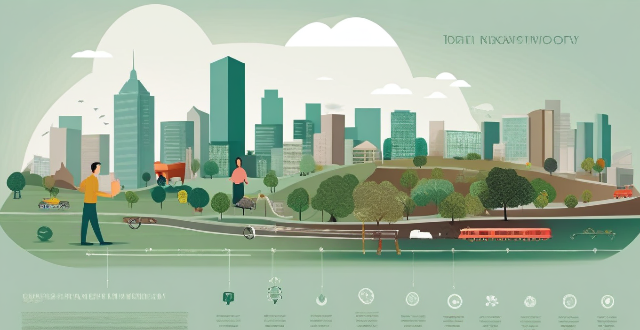Measuring the impact of climate change on a country's economy involves considering direct and indirect economic losses, as well as the costs associated with adaptation and mitigation efforts. Key factors include agriculture, infrastructure damage, health costs, ecosystem services, resource depletion, displacement of people, investments in infrastructure, research and development, policy and regulation, transitioning to low-carbon economies, carbon pricing, and international cooperation. Understanding these factors can help policymakers make informed decisions about addressing climate change challenges.

Measuring the Impact of Climate Change on a Country's Economy
Climate change is a global issue that affects all aspects of life, including the economy. Measuring the impact of climate change on a country's economy involves several steps and considerations. Here are some key factors to consider:
1. Direct Economic Losses
- Agriculture: Changes in temperature, rainfall patterns, and extreme weather events can affect crop yields and livestock production. This can lead to reduced agricultural output, higher food prices, and increased imports.
- Infrastructure Damage: Extreme weather events such as floods, hurricanes, and droughts can cause significant damage to infrastructure, leading to costly repairs and reconstruction.
- Health Costs: Heat waves, air pollution, and disease outbreaks can increase healthcare costs and reduce labor productivity.
2. Indirect Economic Losses
- Ecosystem Services: Climate change can affect ecosystems that provide services such as water filtration, pollination, and nutrient cycling. These losses can have economic consequences for industries like fishing and tourism.
- Resource Depletion: Climate change can exacerbate resource depletion, such as water scarcity or deforestation, which can affect industries like agriculture, forestry, and energy production.
- Displacement of People: Climate change can cause people to relocate due to sea level rise or other environmental changes, which can strain social services and infrastructure in receiving areas.
3. Adaptation Costs
- Investments in Infrastructure: To cope with the effects of climate change, countries may need to invest in infrastructure improvements such as sea walls or irrigation systems.
- Research and Development: Countries may need to invest in research and development to create new technologies or practices that help adapt to changing conditions.
- Policy and Regulation: Developing and implementing policies and regulations related to climate change adaptation can also be costly.
4. Mitigation Costs
- Transitioning to Low-Carbon Economies: Reducing greenhouse gas emissions often requires transitioning away from fossil fuels and investing in renewable energy sources. This can involve significant upfront costs but may lead to long-term savings.
- Carbon Pricing: Implementing carbon pricing mechanisms like taxes or cap-and-trade systems can generate revenue but may also increase costs for certain industries.
- International Cooperation: Participating in international efforts to mitigate climate change, such as the Paris Agreement, may involve financial commitments and cooperation with other countries.
In conclusion, measuring the impact of climate change on a country's economy requires considering both direct and indirect economic losses, as well as the costs associated with adaptation and mitigation efforts. By understanding these factors, policymakers can make informed decisions about how best to address the challenges posed by climate change.